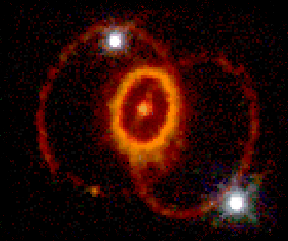This website is kept for archival purposes only and is no longer updated.
 ACCESS, a galactic cosmic ray detector, will help us understand the origin, composition, distribution and life span of elementary particles in our galaxy.
ACCESS, a galactic cosmic ray detector, will help us understand the origin, composition, distribution and life span of elementary particles in our galaxy. Cosmic rays are one of the few samples of matter we have from outside our Solar System, for comets and large meteorites that bombard the Earth all originate from within our Solar System. Cosmic rays, therefore, carry great histories. ACCESS' goal of detecting galactic cosmic rays will help piece together where they came from and contribute to our understanding of the structure of the Universe. We know from previous research on the origin of the elements that heavier elements are created as a star depletes its nuclear fuel of the lighter elements, hydrogen and helium. Lighter elements fuse into heavier ones. When a star explodes, these heavier elements fly into space, often creating even heavier elements, such as uranium. The elements are accelerated to nearly the speed of light by a mechanism not well understood. ACCESS will collect and analyze these elements produced, perhaps, by exploding stars millions of years ago.
|